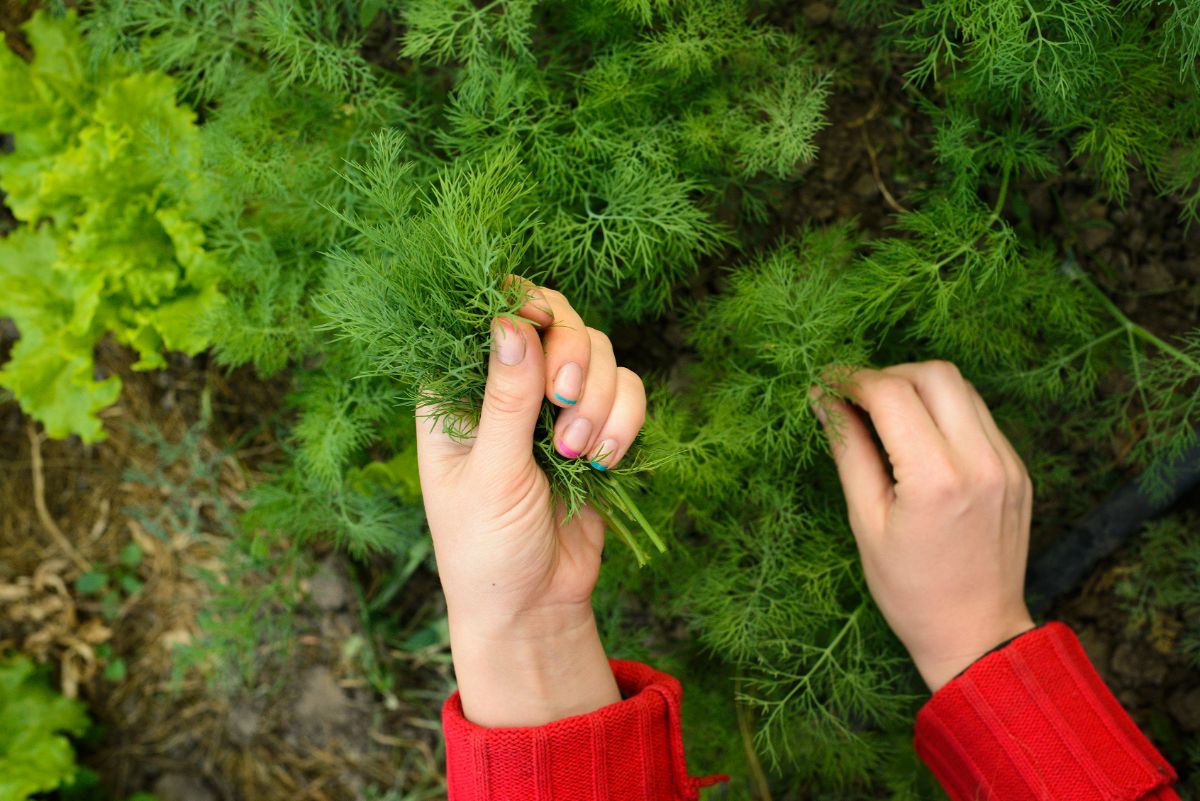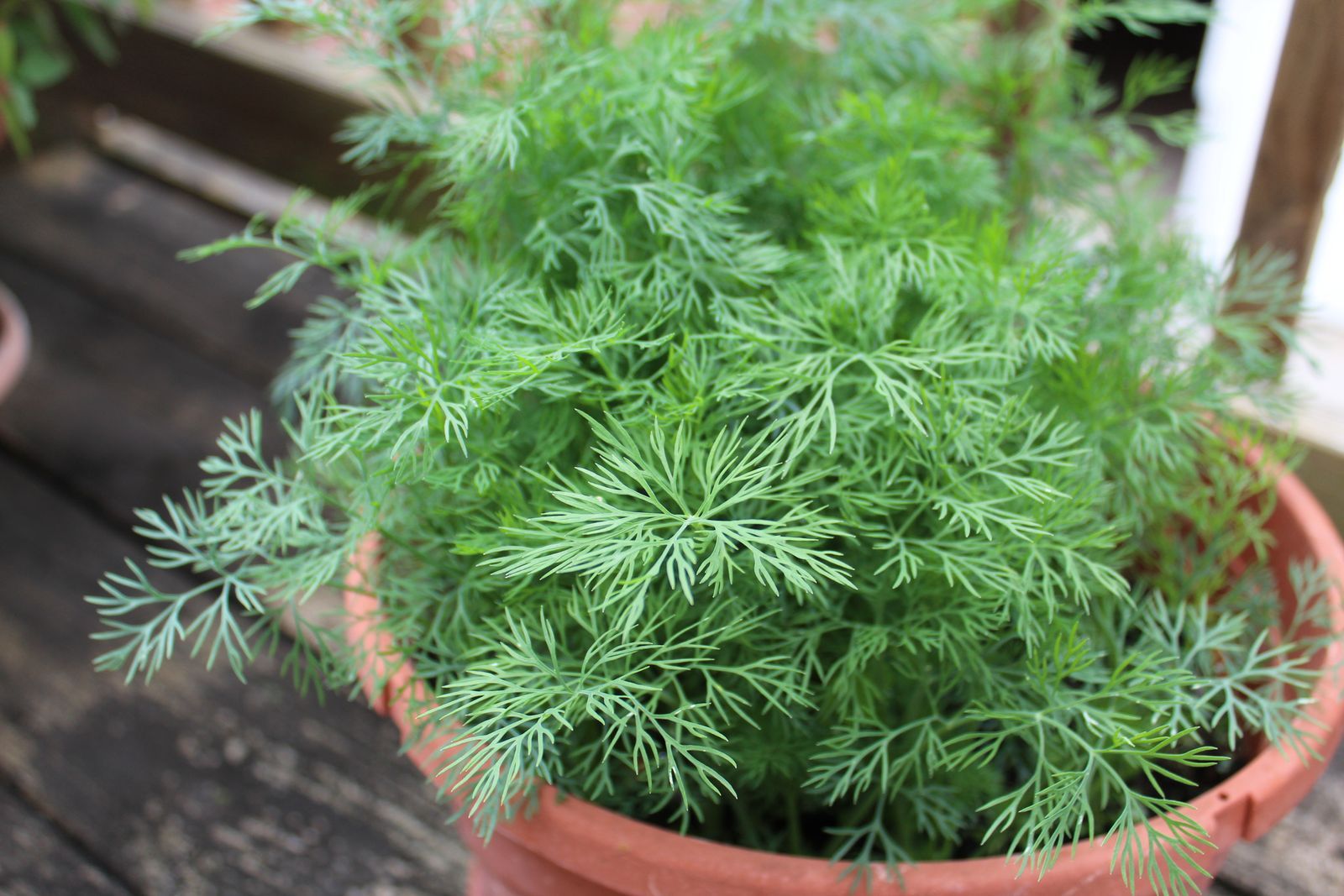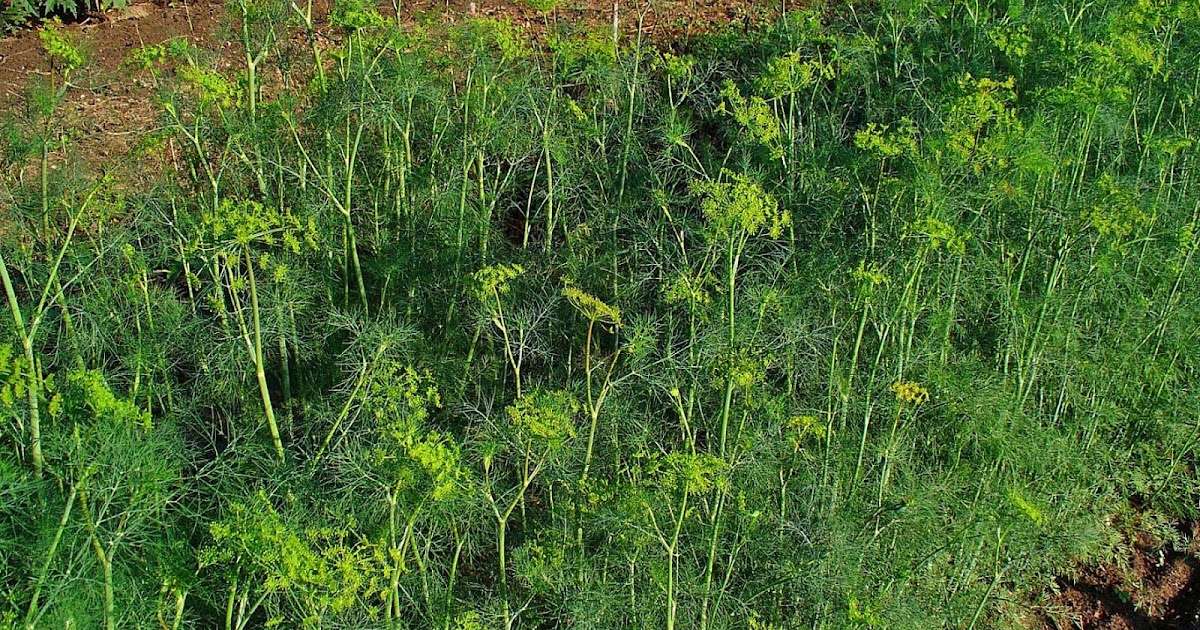It’s one of the easiest herbs to grow.

Native to the Mediterranean and Asia, dill has delicate, feathery foliage and lovely golden-yellow flowers in mid-summer. It’s one of the easiest herbs to grow and readily self-sows by dropping seeds in the garden which will pop up again next year. It’s pretty enough to plant among your flowers, and pollinators love it.
Dill leaves, seeds, and flowers are edible. Of course, dill pickles wouldn’t be the same without this namesake herb. Dill actually has been used for centuries for both culinary and medicinal purposes.
Dill also is a host plant for the black swallowtail caterpillar. It will munch on the foliage, but the plant will recover once they move on to their next stage of development. Just be patient, plant a few extra dill plants, and everyone will be happy!
Here’s what else you need to know about how to grow and care for dill:
Plant Attributes
| Common Name | Dill, dill weed |
| Botanical Name | Anethum graveolens |
| Family | Apiaceae |
| Plant Type | Annual herb |
| Mature Size | 2 to 4 feet wide and 2 to 3 feet tall |
| Sun Exposure | Full sun |
| Soil Type | All types, well-draining |
| Soil pH | Slightly acidic to neutral (6.0 to 8.0) |
| Bloom Time | Summer |
| Flower Color | Yellow |
| Zones | 2 to 11 |
Planting Dill
Because it has a long tap root, dill doesn’t transplant well so it’s best to grow it from seed. Direct sow seeds about 1/4-inch deep in your garden beds or containers in early spring about two weeks before the last expected frost. In the Lower South, you can continue to plant dill from fall to early winter.
Seeds take about 10 days to two weeks to germinate. Plant seeds every two to four weeks for a steady supply of foliage for harvesting. If you allow some of the seeds to drop into your garden beds and self-sow, you usually don’t have to plant them again next year.

Dill Care
Light

Dill needs at least six hours of direct sunlight per day. In a hot climate, it prefers a little afternoon shade.
Soil
Dill needs sandy soils, but it will grow in most soil types. Make sure the soil is well-draining, however, because it doesn’t like soggy roots. Like most herbs, it’s not a heavy feeder so you don’t need to fertilize.
Water
Dill does best with consistent watering, which also prevents the plant from prematurely “bolting,” or going to seed.
Temperature and Humidity
Dill is surprisingly cold-hardy and can tolerate temperatures below freezing for short periods of time. In the Lower South, it may stay green all winter.

How To Harvest Dill for Use
Snip off leaves as needed, which will also help create a bushier plant. The young leaves contain the largest amount of essential oils, so they have the most pungent flavor.
A few weeks after the flowers appear, you can harvest the seeds (which, interestingly, are actually fruits of the plant) when the stems begin to dry out and the seeds turn brown. Store them in a glass lidded jar in a cool, dark place.
Types of Dill
‘Long Island Mammoth’
As the name suggests, it’s one of the taller varieties and can reach more than 40 inches in height.
‘Bouquet’
This type is widely grown because it has good foliage and seed yields. It has beautiful large flowers.
‘Hera’
This is a bunching type of dill that produces masses of blue-green feathery foliage. It’s also slow to bolt.
‘Fernleaf’
This petite type has pretty blue-green foliage and maxes out 18 inches tall, so it’s perfect for containers or small space gardens. It’s slow to bolt and is an All-America Selections winner.
Common Problems with Dill
Dill is usually problem-free, though it occasionally gets aphids that can be blasted off with a strong stream from the garden hose. Beneficial garden visitors, such as lady beetles, which are voracious feeders of aphids, also may take care of the problem for you.





